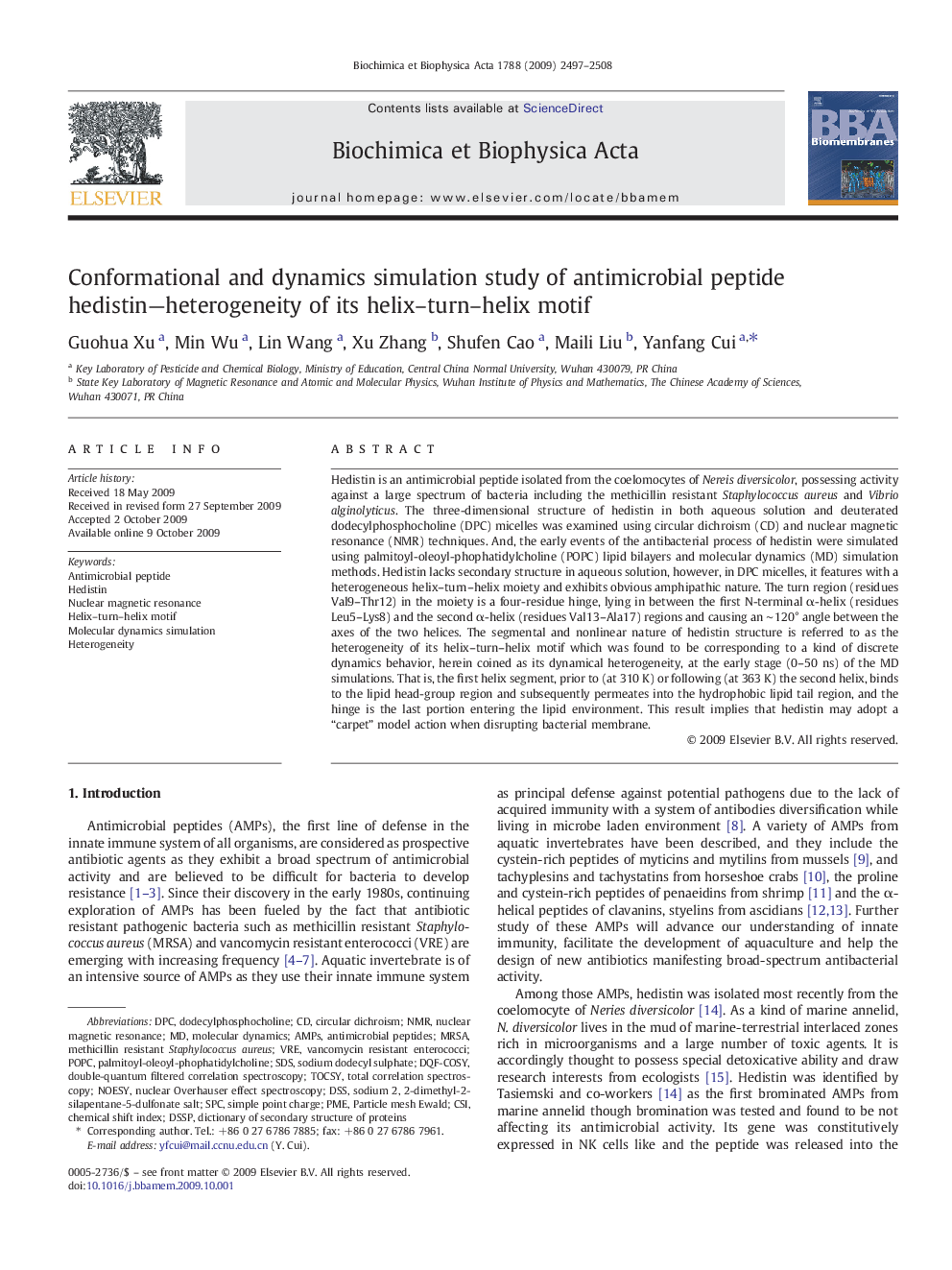| کد مقاله | کد نشریه | سال انتشار | مقاله انگلیسی | نسخه تمام متن |
|---|---|---|---|---|
| 1944878 | 1537145 | 2009 | 12 صفحه PDF | دانلود رایگان |

Hedistin is an antimicrobial peptide isolated from the coelomocytes of Nereis diversicolor, possessing activity against a large spectrum of bacteria including the methicillin resistant Staphylococcus aureus and Vibrio alginolyticus. The three-dimensional structure of hedistin in both aqueous solution and deuterated dodecylphosphocholine (DPC) micelles was examined using circular dichroism (CD) and nuclear magnetic resonance (NMR) techniques. And, the early events of the antibacterial process of hedistin were simulated using palmitoyl-oleoyl-phophatidylcholine (POPC) lipid bilayers and molecular dynamics (MD) simulation methods. Hedistin lacks secondary structure in aqueous solution, however, in DPC micelles, it features with a heterogeneous helix–turn–helix moiety and exhibits obvious amphipathic nature. The turn region (residues Val9–Thr12) in the moiety is a four-residue hinge, lying in between the first N-terminal α-helix (residues Leu5–Lys8) and the second α-helix (residues Val13–Ala17) regions and causing an ∼ 120° angle between the axes of the two helices. The segmental and nonlinear nature of hedistin structure is referred to as the heterogeneity of its helix–turn–helix motif which was found to be corresponding to a kind of discrete dynamics behavior, herein coined as its dynamical heterogeneity, at the early stage (0–50 ns) of the MD simulations. That is, the first helix segment, prior to (at 310 K) or following (at 363 K) the second helix, binds to the lipid head-group region and subsequently permeates into the hydrophobic lipid tail region, and the hinge is the last portion entering the lipid environment. This result implies that hedistin may adopt a “carpet” model action when disrupting bacterial membrane.
Journal: Biochimica et Biophysica Acta (BBA) - Biomembranes - Volume 1788, Issue 12, December 2009, Pages 2497–2508